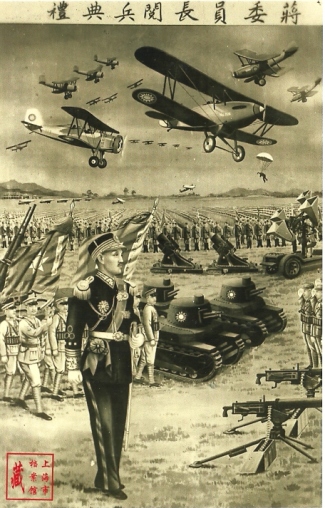Art and History

Origins and Development of Chinese Fascism
When we talk about Chinese fascism we refer to the Blue Shirts or the Society of Rigorous Practice of the Three Principles of the People. But there was another, less known organization, the New Life Movement, a mass-fascist platform based on attracting, mentoring and controlling the population primarily through social policies. This dissertation studies the role of the Chinese Nationalist Party and these organizations in the socio-political context of the first Chinese Civil War.
References
Radicalización del nacionalismo chino moderno: orígenes y desarrollo del fascismo chino. El caso de las organizaciones fascistas del Guomindang: la Sociedad Lixingshe y el Movimiento de la Nueva Vida (1927-1937), Chiao-in Chen doctoral thesis, read at the Department of Modern and Early Modern History and supervised by Dr. Martí Marín Corbera.
Did Chinese fascism exist? When we talk about Chinese fascism, it is necessary to mention the political organization which is known under several different names: the most common name was the Blue Shirts (lanyishe) that was commonly used by the international newspapers during the 1930s. But they was also known in his official name, Society of Rigorous Practice of the Three Principles of the People (sanminzhuyi lixingsheor simply lixingshe). Blue Shirts was the best known Chinese fascism expression, although they are not the only fascist group in China during that time, but they was the most relevant.
More about the character and development of this scuadrismo and elitist type group, it should be mentioned about the other manifestation of Chinese fascism: the New Life Movement (Xinshenghuo yundong). A mass-fascist platform that drew ideological experience based on Blue Shirts in the recruitment, mentoring and social control through eminently social policies. Therefore, we could not ignore the importance of the Blue Shirts in the New Life Movement. On the other hand, despite being the essential reference, those historians specializing in Chinese studies had kept his doubts and reservations about defining them as fascist.
In this sense, it seems that we are in a situation similar to that which has occurred on the Spanish case: the Falange Española, which despite being the most important inclusion in the list of European fascist parties have repeatedly been put in doubt.
Fascism in Europe is a subject much studied by Western historiography, but the case of fascism in Asian, specifically Chinese fascism is still unknown by the most, especially by the Spanish historiography. Also, from the twenties and thirties, the fascist phenomenon influenced China, as well as other Asian countries to the point of reaching develop a ‘native’ fascism. Therefore, this dissertation will discuss the role of the Chinese Nationalist Party (Guomindang, GMD) and highlight the fascist group -Society of Rigorous Practice of the Three Principles of the People- and its expression as a platform for the fascist mass movement called the New Life (Xinshenghuo yundong, MNV) in the Chinese socio-political context of the first Chinese Civil War (1927-1937).
1932 Lixingshe Society began as a secret group within the military in GMD, which its situation was one of particular characteristics of the Fascist history. The Blue Shirts disappeared organically as a group and was reformed into the Guomindang party named Youth of the Three Principles of the People (sanminzhuyi qingniantuan) on July 9, 1938. This is necessary to emphasize its origins, which are embedded in the development of the GMD and in the Nanjing regime. The figures of Sun Yat-sen (1866-1925) and Chiang Kai-shek (1887-1975), both was the symbol of the authentic and legality leader and defender of the Chinese tradition and Confucianism. So all this makes us necessarily start this paper beyond the chronology of the first Civil War China, and in some case go back to the crisis of the Qing Empire and the Revolution of 1911 to find the origins of Chinese modern nationalism and its relation with Chinese fascism.
Top left figure: GMD Army's military propaganda with Chiang Kai-shek's image. Shanghai City Archive: H1-1-109-3, n. d.
Chiao-In Chen
Department of Modern and Contemporary History
2025 Universitat Autònoma de Barcelona
B.11870-2012 ISSN: 2014-6388
